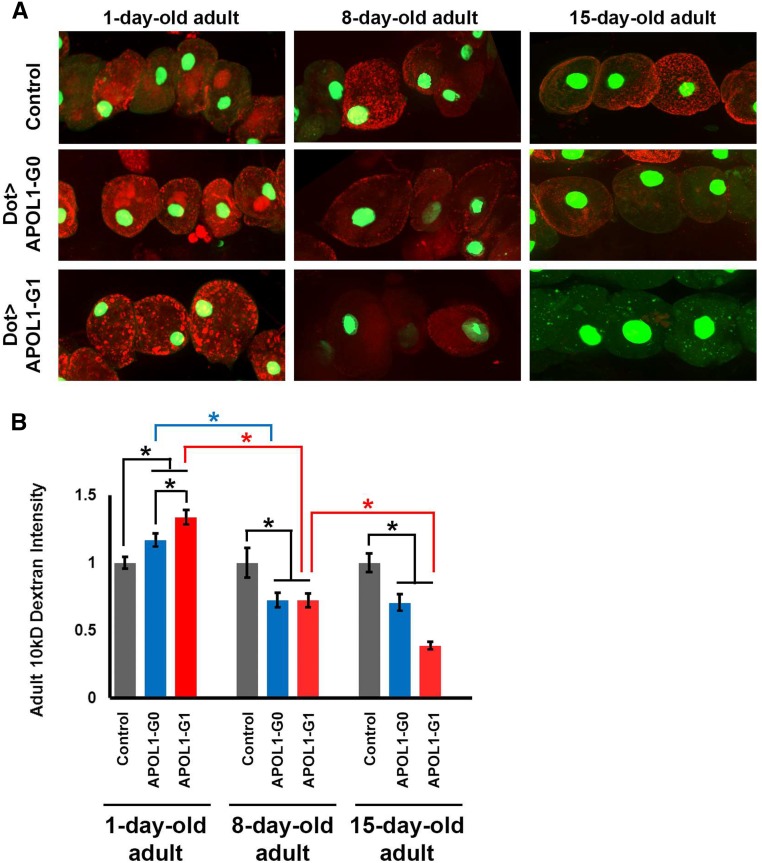Figure 3.
APOL1 G0 and G1 induced biphasic age-related changes in nephrocyte uptake of fluorescent dextran particles. (A) Nephrocytes dissected from young (day 1 postemergence) APOL1-G0 and G1 transgenic flies showed increased ability to internalize 10 kD fluorescent dextran particles54 compared with control nephrocytes (carrying Dot-GAL4 driver without UAS-APOL1 transgene). By day 8, APOL1 expression was associated with dextran internalization reduced to levels significantly less than control nephrocytes. The reduced dextran internalization phenotype was relatively more severe in 15-day-old fly nephrocytes. Nephrocytes express a nuclear-localized GFP marker.55 (B) Quantification of adult nephrocyte dextran internalization. Both G0 and G1 forms of APOL1 led to increased dextran internalization at day 1, but G1 induced significantly higher levels than G0. By day 8, APOL1 was associated with significantly reduced dextran internalization relative to control nephrocytes, and levels on day 1. In 15-day-old nephrocytes expressing APOL1-G1 the dextran internalization phenotype is significantly more severe than at day 8. G0 expression, by contrast, was not associated with increased reduction in internalization capability. Control nephrocyte dextran internalization capacity remained unchanged throughout the time course of the experiment. For quantification, ≥20 nephrocytes were analyzed from each of three female flies per genotype. The results are presented as mean±SD. Statistical significance (*) was defined as P<0.05.

